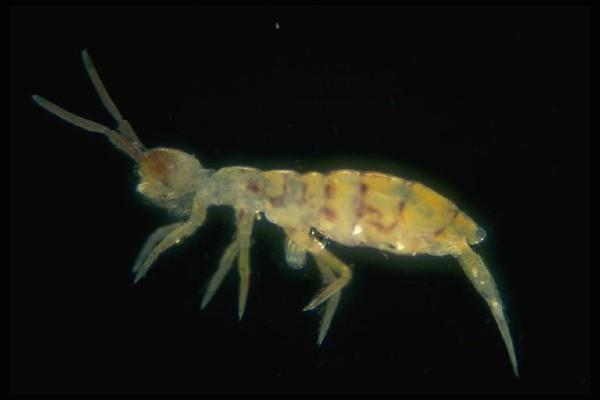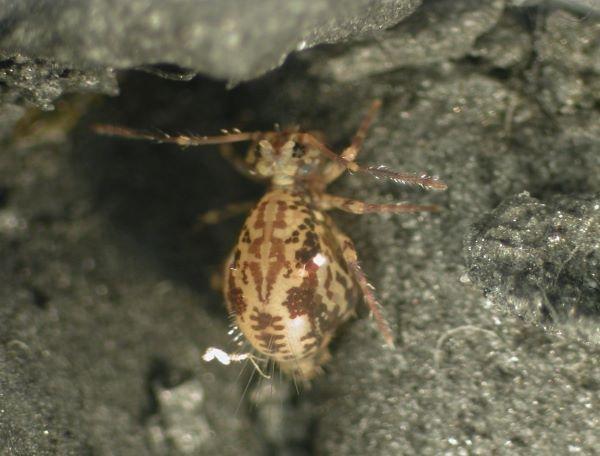Key points
-
Springtails are very small insects, 1 to 2 millimeters long (1/25th to 1/12th of an inch). They are whitish or grayish in color and have a forked appendage at the rear that enables them to jump.
-
Springtails do not bite or cause damage. They primarily feed on algae, fungi, pollen, and decaying organic matter and are an important part of soil ecosystems.
-
They may occasionally be a nuisance in bathrooms, kitchens, and basements.
-
Infestations in buildings are usually associated with dampness, organic matter, and mold.
-
Springtails usually occur in the soil, but may also be found under potted plants, and decaying vegetable matter.


Management
-
Springtails inside a home or building generally suggest some kind of moisture problem.
-
The moisture may be from a leaky pipe or excessively high humidity.
-
They may also enter a building seeking moisture when their outside habitat becomes too dry.
-
Fixing water leaks, drying out the affected area, or running a dehumidifier will often eliminate the springtails.
-
Insecticide sprays inside the home are not recommended or necessary.
Rev. 2020
